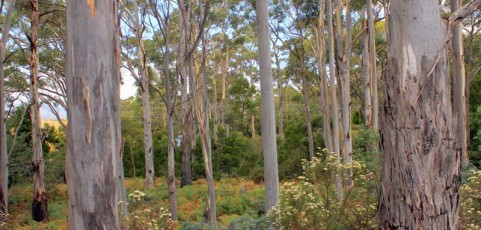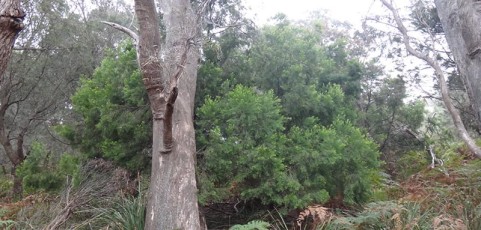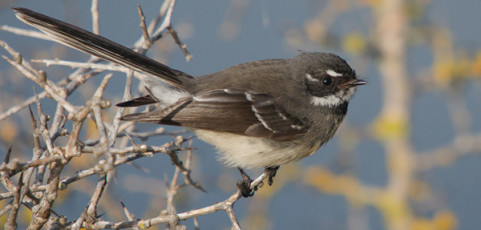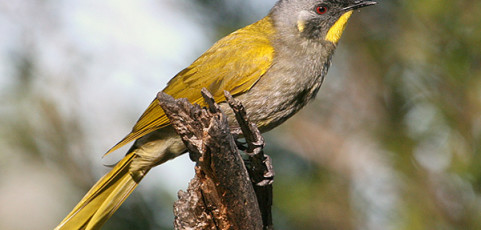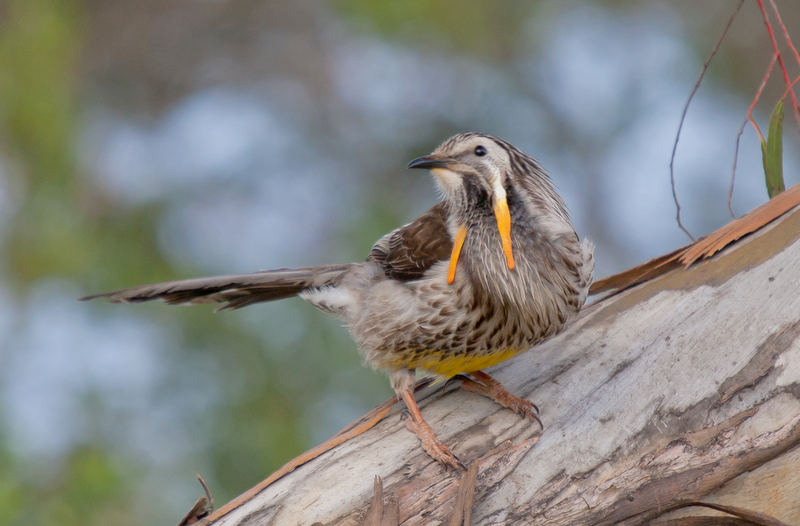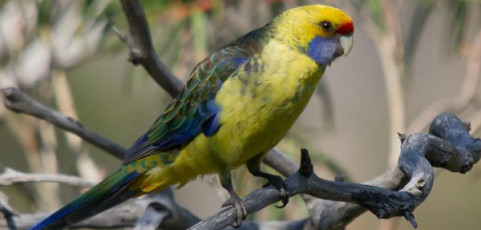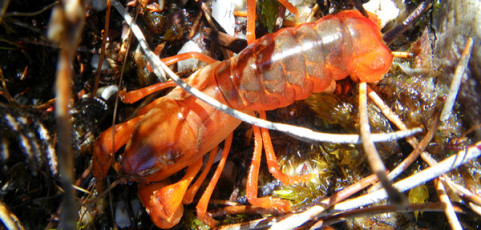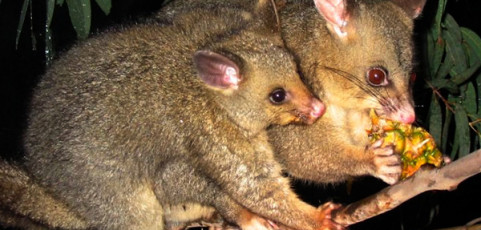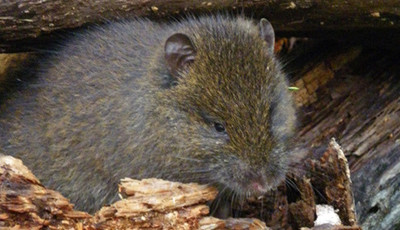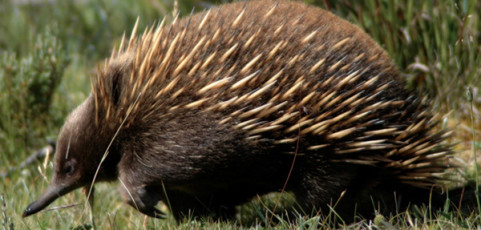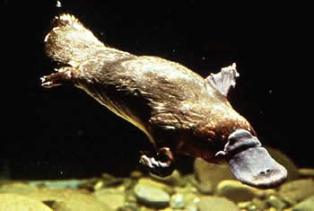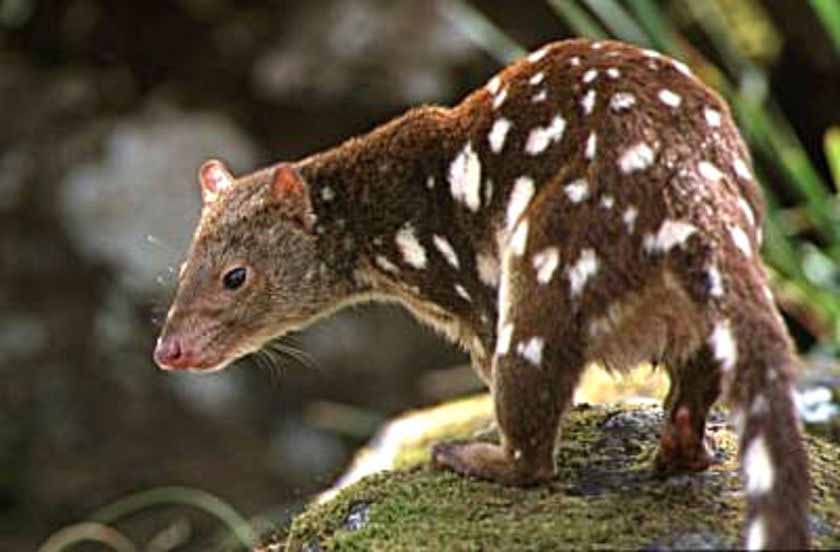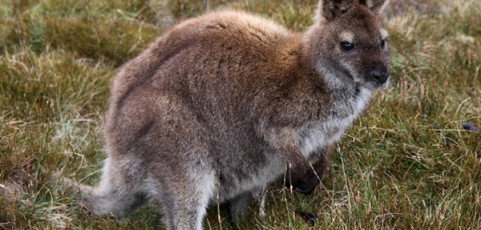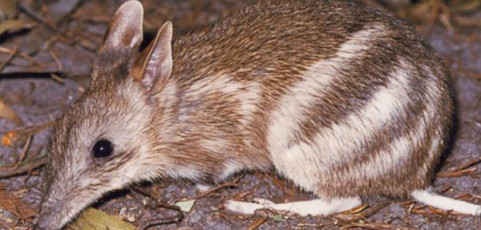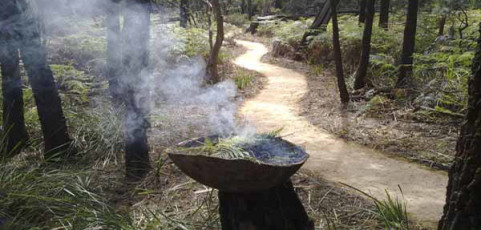White gum ( Eucalyptus viminalis), are dominant on the river reserve near the Ada Street shelter. Alongside the river there are moisture-loving herbs, ferns, sedges, rushes and reeds. Paperbark swamplands occur where the Brid River flows into Anderson Bay. A riparian corridor with dense plantings of a range of small native trees and shrubs is important to the restoration of the Riparian reserve. Riparian revegetation practices helps stabilise...
Black Peppermint
The Black Peppermint ( Eucalyptus amygdalina) is endemic to Tasmania and a dominant tree on the River-Forest track. It is known for its rough bark and narrow peppermint scented leaves when crushed.
Grey Fantail
Grey Fantail (Rhipidura fuliginosa). The Grey Fantail ( Rhipidura fuliginosa) is around 17 cm in size. It is one of the friendliest birds in the bush and is named for its long fan like tail. It is characterized for its erratic flight and how it dashes out from its perch to chase insects.
Yellow-throated Honeyeater
Yellow-throated Honeyeater (Lichenostomus flavicollis). The Yellow-throated Honeyeater (Lichenostomus flavicollis ) prefers a eucalypt forest habitat where it feeds on seasonally available nectar and insects. The species breeds from August to December, and lays two to three spotted pinkish eggs in a cup-shaped nest which is built within a metre of the ground.
Yellow Wattlebird
Yellow Wattlebird (Anthochaera paradoxa). The Yellow Wattlebird (Anthochaera paradoxa) is Australia’s largest honeyeater (380-480 mm) and endemic to Tasmania, found in eucalypt forest and woodlands typical of the River-Forest. It feeds on insects and nectar. Both sexes are similar in appearance.
Green-Rosella
There are 12 endemic species of birds in Tasmania and 3 have been identified in this area; Green Rosella (Platycercus caledonicus), The well known Green Rosella ( Platycercus caledonicus ) is Australia’s largest rosella (330-370mm). Male and female birds have the same bright green and yellow colouring.
Burrowing Crayfish
The swampy low lying areas of the River-Forest track provide the perfect habitat for the tiny and vulnerable Burrowing Crayfish ( Engaeus genera).
The Brush-tail Possum
The Brush-tail Possum ( Trichosurus Vulpecula ) is nocturnal and is named for its very bushy tail. It has very thick soft fur that ranges in colour from silver-grey to yellowish tan to dark brown.
Swamp-Rat
The nocturnal Swamp (velvet-furred) Rat ( Rattus Lutreolus) is a native small mammal, half the size of the introduced black and brown rats. It forms extensive systems of runways beneath dense vegetation.
Short-beaked-Echidna
Echidnas are shy creatures and move slowly and carefully. If disturbed they roll into a ball or vigorously dig into the ground so that only the spines are exposed. They have short limbs and powerful claws. They mainly eat ants and termites, but other invertebrates especially grubs, larvae and worms can be a part of their diet.
Platypus
Platypus are resident in the freshwater habitat of the Brid River. They dig burrows in the earth banks and forage mainly at night on small invertebrate animals on the bottom, including crustaceans, worms, molluscs, as well as the larvae of many freshwater insects. They can easily detect movement on the river bank, and they have acute hearing.
Spotted-tailed-Quoll
The Spotted-tailed Quoll (Dasyurus maculatus) is the second largest carnivorous marsupial in the world. They kill their prey such as rats, gliding possums, small or injured wallabies, and reptiles by biting on or behind the head. They vary from reddish brown to dark chocolate brown with white spots on the body and tail.
Bennett’s-Wallaby
The Bennetts or Red-necked Wallaby (Macro Rufogriscus) is Tasmania’s largest marsupial and the Rufous or Tasmanian Pademelon ( Thylogale billardierii) is the second largest. The Bennetts Wallaby is easily distinguished by its black nose and paws, and white stripe on the upper lip. Both are mostly nocturnal and solitary, but may be seen grazing at dusk while they feed on grasses and herbs, and the leaves of trees and...
Eastern-Barred-Bandicoot
The Eastern Barred Bandicoot, Southern-brown Bandicoot and Spotted-tailed Quoll are endangered and fully protected by law. Bandicoots are small, nocturnal, solitary marsupials, with large ears and pointed snouts. The Eastern Barred Bandicoot ( Perameles Gunnii ) has a white tail and stripes across its hindquarters. The Southern- brown Bandicoot ( Isoodon Obesulus) is dark brown in colour and its nose, ears and hind feet are...
Welcome to Country
“Yah Pulingina” -Welcome to Country. In respect and recognition of the leenerrerter the traditional owners of the coast and hinterlands around Bridport.

